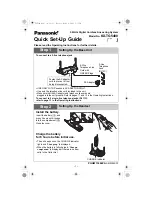
93
9-1-2022
APQS.com
Quilting Basics
Continue rolling the fabric on to the Quilt Backing Roller, smoothing the fabric as you wind,
working from the center out toward each edge.
If you have backing seams that wrap around the roller, grasp each seam and twist it tightly
on the roller. Since three layers of fabric build up on this seam as it encircles the roller, the
backing may distort in this area.
You want to smash the seam as tightly as possible on the
roller to keep the backing smooth.
When you tighten this seam on the roller it helps
compress the layers there, reducing the chance for puckers and tucks on the back.
Continue smoothing and rolling until the backing fabric drops off your Pick-Up Roller.
If you used “Option 1” to load the backing fabric by flipping the Backing Roller canvas back
upon itself, take the backing fabric
over
the Quilt Top Roller and drop it down between the
two rollers.
If you used “Option 2,” then your quilt backing will already be between the Quilt Top Roller and the Backing
Roller. You may now move on to the quilt top preparation and loading.
NOTE:
New quilters often over-tighten the backing on the side of the roller corresponding to their dominant hand.
One way to check is to roll the backing fabric back off the Backing Roller until it just meets your floor. Assuming
your floor is straight, the backing fabric should also be straight and parallel to the floor. If not, begin rolling it on
again, striving for consistent pressure from both hands as you wrap it on the roller.
Step 6: Prepare and Mount the Quilt Top
•
Press the quilt if necessary and trim any threads that might “shadow through” to the quilt’s surface.
Check for holes or seams that are not secure and repair if needed.
•
Remember that if you’re mounting your quilt sideways to conserve quilting time, you’ll need to find
the center of the
sides
of your quilt, not the top and bottom edges.
•
Make sure that the safety pin you added to the side of your quilt that represents its “top” edge is on
the same side of the frame as the pin you used to mark the “top” edge of the backing. If you’re loading
the quilt sideways these safety pins will either be on the left or right side of the quilt.
•
Locate the “true center” of the quilt,
not
the center of the border, and mark this center with a straight
or safety pin on the edges of the quilt that you have chosen to mount to the frame.
o
Rather than folding the quilt top in half, use one of the following methods to find the “true
center” of the quilt (illustration on the next page):
Follow a center piecing seam out to the edges of the quilt.
Split an on-point block in half and follow the imaginary line to the edge of the quilt.
Match inner corners of patchwork instead of outer borders if there is no
distinguishable center seam .
•
If you will be turning the quilt to do side borders, repeat the process to find the center of the sides and
mark with a safety pin.









































